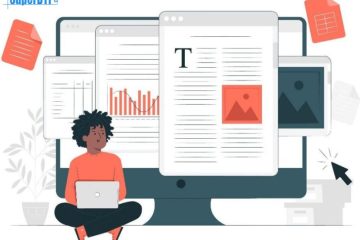Introduction: Why Accessibility Matters
Accessibility in PDF remediation is crucial for several reasons, including legal compliance, improved user experience, and broader inclusivity. By guaranteeing that people with impairments can view and comprehend the material, accessible PDFs promote a more equal online environment. Remediation efforts address potential barriers, allowing users with visual impairments, hearing issues, and other disabilities to engage with the information effectively.
What Is PDF Remediation?
The process of “tagging” digital elements of PDF documents so that they may be read by assistive technology is called PDF remediation. Once more, these “tags” serve to identify the components and let assistive technology know which sequence they should be read. The PDF file format is widely used by companies because it maintains its visual consistency across platforms. The PDF format is reliable and consistent for visual users on a range of platforms and devices.
Why Is PDF Remediation Important?
One of the most widely used digital formats for all kinds of documents is PDF, or Portable Document Format. Examples of these include applications, e-books, statements, invoices, and manuals. The majority of businesses have vast quantities of PDF documents in their databases, servers, apps, websites, and other digital assets. Although the general public is typically the intended audience for these papers, not all users access PDFs in the same manner. For example, a visually impaired person will see the PDF differently than a sighted person.
Remedial document preparation is essential for those with disabilities or those utilizing assistive technology, such as screen readers, speech recognition software, alternative input devices, or screen magnifiers, text-to-speech software, and Braille displays. It can also help those with cognitive impairments or other disorders of the brain. Another significant benefit is that online documents can become more valuable and improve their SEO with the correct tags. For digital content to be inclusive and readable by everyone, regardless of ability or disability, PDF accessibility is essential.
Getting Started: PDF Accessibility Basics
Tagged PDFs: Similar to the HTML code that gives a webpage its meaning, consider tags to be the fundamental building blocks of your PDF. Headings, paragraphs, lists, images, and more are all identified by tags, which offer semantic information about the content. Screen readers and other assistive technologies depend on this structural data.
ALT Text for Images:- Providing descriptions or ALT text for images, graphs, and other visual content in your PDF enables users of assistive technologies like screen readers to comprehend the content conveyed by these visuals.
Employ appropriate header structure: Give your content a logical framework by using headings. Headings 1 and 2 should be used for the primary title, significant sections, and subsections, respectively. This makes it easier for screen reader users to traverse your document.
Include a table of contents: This will help users navigate your document more easily. To add a table of contents, use your PDF editor’s “Create PDF Table of Contents” tool.
Tools to Help with PDF Remediation
Acrobat Pro DC Pros
- Because human checks, such as confirming suitable alt text, are required, working in the Tag tree aids in achieving completely accessible content.
- Enables tags to be created, even from untagged documents.
- Correct reading order.
- Create and/or convert tags.
Microsoft Word and PowerPoint
Word and PowerPoint can be used directly to create accessible PDFs.Use the built-in accessibility checker before exporting the document as a PDF.
Common Mistakes to Avoid
Lack of Language Specification Leading to Language Barriers
Ignoring the document’s text is one of the more common errors in PDF accessibility. This presents a language barrier for people with disabilities who use screen readers and other assistive technology. Their internet experience may be impacted if they have trouble appropriately interpreting content.
Missing Alternative Text
Some users cannot perceive content visually. Alternative text (also called alt text) provides a description of visual content graphs, photos, and other images, enabling screen readers to describe those components to users.
Inaccessible Forms
Make sure people can fill out your PDF electronically if it has a fillable form. This is important even if you don’t have a way to submit the completed form online. Instead of manually filling out the form fields, some users might want to finish the form and print it.
Disappearing Content
Some of your stuff may “disappear” if you choose the incorrect tags while tagging it. Instead of the material disappearing, the PDF’s layers become obscured. To display these layers in the proper order, you must reorganize them. To bring your buried material back to the front, you will need to look for it in the content panel and rearrange it.
Best Practices for Creating Accessible PDFs from the Start
1. Use Proper Headings and Document Structure
A clear, logical document structure is a crucial component of accessible PDF design. Appropriate headers facilitate effective content navigation for users and aid in accurate information delivery by screen readers.
2 . Examine PDF accessibility guidelines, such as those included in the Web Content Accessibility Guidelines, first. These recommendations cover the bare minimum needed and how to make sure your documents are accessible to everyone.
Document structure tags
Navigational aids (links, headings, and so on)
Alternative text descriptions
Appropriate title tags
Document language indication
And other accessible features
Conclusion:
PDF remediation may seem complex at first, but with the right tools, knowledge, and mindset, it becomes manageable—and deeply rewarding. By making your PDFs accessible, you’re opening doors to millions of users who would otherwise be excluded from vital information.
Being accessible requires constant dedication rather than a one-time effort. As digital content continues to grow, organizations must embed accessibility into their document creation workflows from the start. By doing so, you not only comply with the law but also foster inclusion, equity, and usability for all.
Super DTP Ltd is a specialized desktop publishing agency located in Gabrovo, Bulgaria, offering book publishing, multilingual DTP, and E-learning localization services to translation agencies and localization companies worldwide! Check our services at www.superdtp.com or contact us at dtp.bulgaria@gmail.com for further details.


